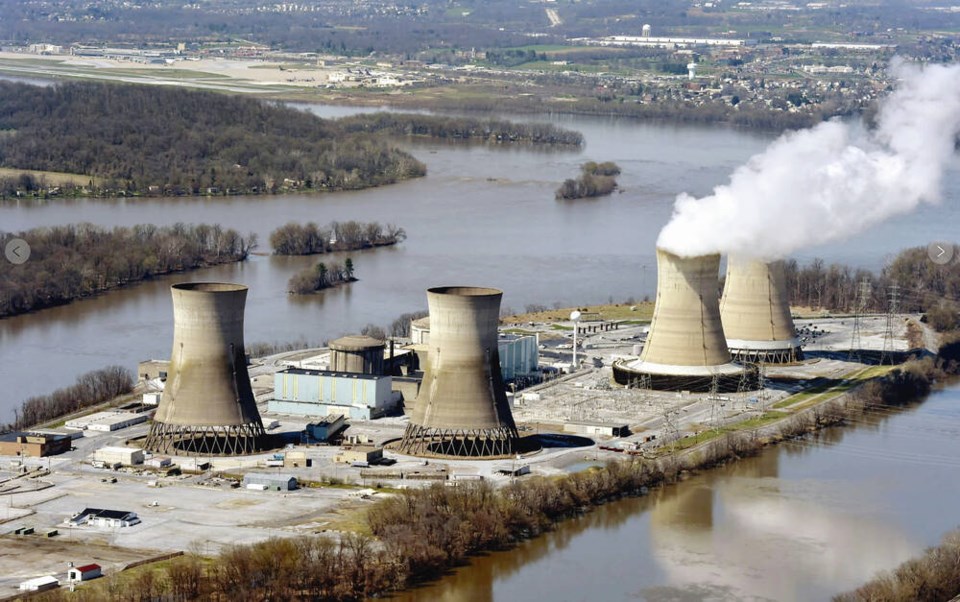A commentary by a retired Canadian business leader who lives in Greater Victoria.
Three Mile Island might be a name only us retired folk will remember.
On March 28, 1979, the Three Mile Island Unit 2 reactor near Middletown, Pennsylvania, experienced a partial meltdown. It was the most serious accident in U.S. nuclear power plant operating history — though no one was killed or injured.
Now, 45 years later, comes the announcement of a Microsoft Corp. deal with plant owner Constellation Energy Corp. to restart the adjacent Unit 1 reactor, which was shut down in 2019 because of operating losses.
What has changed? The answer is electricity demand for artificial intelligence. As a Goldman Sachs report puts it, “On average, a ChatGPT query needs 10 times as much electricity to process as a Google search.”
The report estimates data centre power demand will grow 160 per cent by 2030.
So where will all this additional power come from?
In the United States, 60 per cent of electricity comes from natural gas and coal. Nuclear supplies 19 per cent, hydro six per cent, and wind and solar the remaining 14 per cent.
But wind and solar are intermittent and can’t be counted on for the secure baseload AI requires.
Three Mile Island won’t come back on stream until 2028. Until then, growth in AI power demand will have to be met by fossil fuels. Natural gas is by far the lowest emission fossil fuel and, fortunately for Americans, it’s in robust supply.
In Canada, though 60 per cent of our electricity comes from hydro power, no viable new dam sites are left. Ontario’s nuclear plants supply another 16 per cent.
Expansion is under consideration, but any new capacity is many years away. Coal and coke supply eight per cent, natural gas eight per cent and solar and wind just six per cent.
But since wind and solar are undependable and coal and coke unacceptable, that means Canada’s AI electricity demand will also need to be fuelled by natural gas.
Fortunately, Canada has enormous untapped reserves.
Unlike North America, Europe has been struggling just to meet existing electricity demand after natural gas imports from Russia fell from 5.5 trillion cubic feet in 2021 to 2.2 trillion in 2023.
Europe’s only realistic short-term option is liquefied natural gas imports.
Germany, formerly the largest importer of Russian gas, is constructing LNG terminals on an urgent basis.
Unfortunately, China is in talks with Russia that could lead to a complete halt in gas flows, thus further escalating Europe’s need for LNG.
That makes meeting the electricity demands of the EU’s emerging AI sector even more challenging.
Moreover, Europe’s power grid is the oldest in the world at 50 years, so it needs both modernization and expansion.
The Goldman Sachs report says “Europe needs $1 trillion to prepare its power grid for AI.”
And its researchers estimate power demand could grow by at least 40 per cent over the next 10 years, requiring investment of $861 billion US in electricity generation, plus an even higher amount to replace those old transmission systems.
The situation is both complex and challenging, but one thing is clear: the electricity Europe requires for AI can only be fuelled by natural gas.
The AI frenzy may seem incomprehensible to most Canadians. But it’s real.
After a year of assessment, Toronto-based Thomson Reuters has concluded AI is key to its future so it will be spending $100 million US annually to develop its electricity-hungry AI requirements.
That this is the cost for just one medium-size company puts into perspective the electricity-hungry global growth of AI.
Meeting AI’s electricity demands is challenging enough, but there’s another major source of demand growth: electric vehicles.
An International Energy Agency report estimates that EV-associated electricity demand in the U.S. and Europe will have to rise from less than one per cent of total electricity demand today to 14 per cent in 2030 if EV mandates are to be met.
Almost forgotten in the electricity-devouring list are cryptocurrencies. In 2020-21 Bitcoin “mining” consumed more electricity than the 230 million people of Pakistan did.
Who could have imagined that these celebrated new technologies — AI, EVs and cryptocurrencies — would be the biggest drivers of fossil fuel growth?
But they are.
Canada must seize this enormous natural gas export opportunity by getting rid of the time-killing processes and other bureaucratic roadblocks that have so long discouraged getting new LNG export terminals in place.




